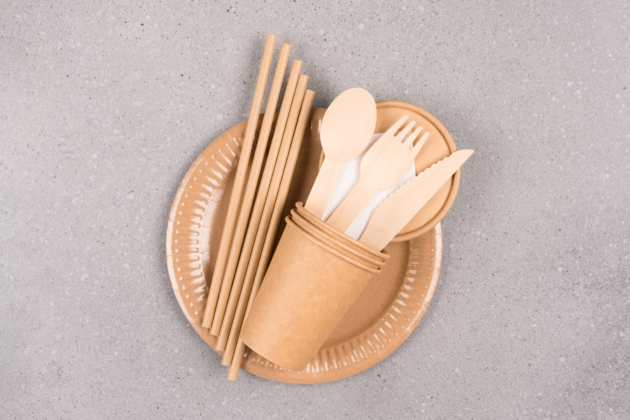
Packaging: Upcycling in food packaging
By Carol Zweep
Packaging Editor pick upcycling Photo © Iryna Mylinska / Adobe Stock
Photo © Iryna Mylinska / Adobe Stock Food waste is a global issue. According to the Food and Agriculture Organization of the United Nations, over one-third of food produced globally for consumption is lost or wasted per year. The National Zero Waste Council conducted research on Canadian household food waste in 2022 and found 2.3 million tonnes of edible food is wasted each year. With concerns about food waste rising around the world, the food industry is looking to upcycling as a potential solution. The Oxford Dictionary defines upcycling as “reuse (discarded objects or material) in such a way as to create a product of higher quality or value than the original.” Upcycled food creates new, high-quality products from food that would otherwise be going to waste.
There are many examples of upcycled food containing beneficial nutrients such as fibre, protein, potassium and antioxidants. Coffee plant fruit, a byproduct of coffee bean harvesting, can be made into gluten-free flour. Spent grain from beer production can be made into barley milk. The pulpy byproduct of soy milk and tofu production (okara) can be added as an upcycled ingredient in pasta.
In addition to upcycling food waste into viable food products, food waste can also be upcycled into packaging materials. In Canada, over three million tonnes of plastic waste are thrown away each year. The Council of Ministers of the Environment (CCME) developed a Canada-Wide Strategy on Zero Plastic Waste. To support this strategy, the Government of Canada published the Single-use Plastics Prohibition Regulations on June 22, 2022. The Regulations apply to six single-use plastic categories (checkout bags, cutlery, foodservices ware, ring carriers, stir sticks and straws) and prohibit the manufacture, import, sale and, eventually, export of these items.
Eco-friendly alternatives to single-use plastics are actively being developed, with some incorporating food waste into upcycled packaging materials. These innovations include packaging made from mycelium (the vegetative root structure of a mushroom), risk husk, brewers’ spent grain, and boxes and papers containing sun-dried grass. Legumes, such as soybeans, can be a source of fibre and protein used to make packaging. Extracted soy fibre can be processed physically via compression molding or enzymatically. Isolated soy proteins combined with additives (plasticizer, surfactants, biodegradable polymers, and oils) can be made into packaging materials. Protein can also be modified by chemical or enzyme cross-linking or UV modification. Legume wastewater can be a source of fibre and protein used in edible packaging.
MiTerro is using new technology to upcycle milk proteins into plastic and cotton-like fibre to create more sustainable fabric and packaging. Oregon State University scientists have turned apple waste into compostable packaging material that can be used as moulded pulp packaging for egg cartons, beverage cartons and take-out containers. Upcycling food waste into packaging presents a new era for bioplastics and sustainable food packaging.
In addition to using food waste for upcycling, waste packaging materials are also being upcycled into useful items such as building supplies. In the favelas of Brazil, plastic water bottles and polythene are readily available and used to build structures. Hard-to-recycle plastic waste can be made into value-added products, such as lumber for decking and furniture. Packaging is also being upcycled to create beautiful arts and crafts. TerraCycle makes fashionable totes and backpacks from juice pouch material.
Upcycling food waste into quality food products and packaging material reduces the amount of methane (a greenhouse gas) produced from food decomposition in landfills. Every tonne of food waste that is avoided is the equivalent of taking one car off the road each year. Upcycling helps to save resources used to grow, produce, and distribute food to consumers. Nutrients are also captured in upcycled products. Diverting food waste into value-added products can create a sustainable and resilient food system.
Upcycling is a growing trend. The negative environmental consequences of food and packaging waste have introduced a cultural shift in how people think about the products they buy and use. Creative upcycling offers the potential for widespread social, economic, and environmental benefits.
Carol Zweep is consulting and technical service manager for NSF Canada. Contact her at czweep@nsf.org.
This column was originally published in the August/September 2022 issue of Food in Canada.
Print this page